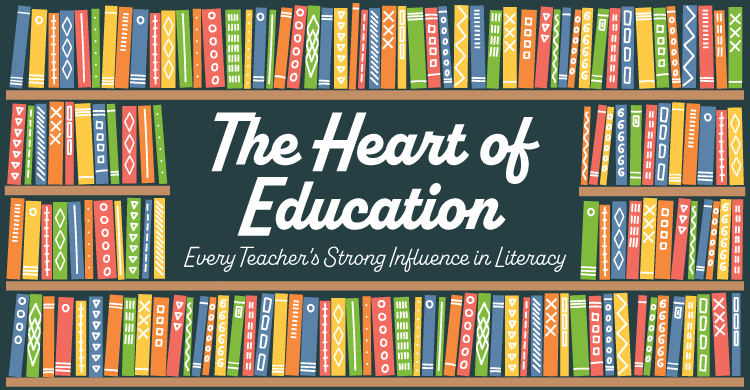As educators, we often find ourselves fulfilling many roles. Whether we’re guiding students through complex math problems, fostering their understanding of historical events, or helping them navigate the world of language, our involvement goes far beyond the subjects we are assigned to teach.
One of the most crucial yet often overlooked responsibilities we all have is being a reading teacher. This responsibility, though most apparent for language arts instructors, extends to every educator, regardless of their subject area. As a middle school Spanish teacher, this realization struck me in a profound way when I took on the challenge of integrating reading instruction into my curriculum.
How I found reading instruction important, even as a Spanish Teacher
When I first began my career as a Spanish teacher, my focus was naturally on helping students learn a new language—building vocabulary, mastering grammar, and developing conversational skills. However, I quickly realized that to teach Spanish effectively, I had to teach my students how to read in Spanish. This was a daunting task, especially since many of them struggled with reading in English, their first language.
The turning point came when I decided to introduce a novel into my curriculum. The novel, written in Spanish, was intended to immerse my students in the language, providing them with a context-rich environment to practice their reading and comprehension skills. But as we began working through the book, I saw just how much they struggled—not just with the Spanish text but with the fundamental act of reading itself.
This experience was eye-opening. Here I was, a Spanish teacher, finding myself in the unexpected position of having to teach reading skills—skills that I assumed were already well established by the time students reached middle school. I quickly learned that this assumption was far from accurate.
Classroom tricks to inspire a love for reading
Realizing I had to do something more intentional to help the students’ reading skills, I set out to create activities that would support my students’ reading development. I crafted vocabulary exercises, designed comprehension questions, and even organized small group discussions to help students engage with the text. I did my best to scaffold their learning, breaking down the text into manageable chunks and guiding them through the nuances of reading in a second language.
I first tried a vocabulary scavenger hunt. Students were tasked with finding specific words in the text, defining them in their own words, and then using them in a sentence. This exercise not only helped them build their Spanish vocabulary but also enhanced their understanding of how to decode unfamiliar words—an essential reading skill in any language.
Then I developed a series of comprehension questions that ranged from simple recall to more complex, inferential thinking. I wanted to ensure that my students weren’t just translating words from Spanish to English, but actually understanding the narrative and engaging with the story on a deeper level. These activities, though rooted in language learning, were fundamentally about teaching reading.
How the science of reading is the missing piece and why it’s best for growth
Looking back, I realize how much more effective I could have been if I had understood more about the science of reading at the time. The science of reading encompasses a vast body of research that explains how we learn to read, how we can best teach reading, and why some students struggle with reading while others do not. This research could have informed my teaching practices, helping me to better support my students’ reading development, particularly English learners, both in English and in Spanish.
Phonics
I now understand the importance of explicit phonics instruction, even in middle school. Many of my students were still grappling with phonemic awareness—an understanding of how sounds correspond to letters and how those letters come together to form words. Had I incorporated more phonics-based activities, such as breaking down words into their component sounds and blending them back together, my students might have had an easier time decoding the Spanish text.
Reading comprehension
Additionally, I wish I had known more about the role of background knowledge in reading comprehension. The science of reading tells us that comprehension is heavily dependent on what students already know about a subject. In my Spanish class, this meant that students who had prior knowledge of the cultural and historical context of the novel we were reading could comprehend the text much better than those who didn’t. Had I spent more time building that background knowledge before diving into the novel, all of my students might have had a better chance at understanding the material.
Why every teacher should teach their students how to read
The experience of teaching reading in my Spanish class taught me that literacy in education isn’t confined to the language arts classroom. It’s an essential skill that underpins all learning, and every teacher has a role to play in fostering it. Whether we’re teaching science, history, math, or a foreign language, we are all reading teachers to some extent.
For me, this meant embracing my role as a reading teacher, even if it wasn’t part of my official job description. It meant recognizing that my students needed support in building their reading skills—both in English and in Spanish—and that it was my responsibility to provide that support.
As educators, we must equip ourselves with the knowledge and tools necessary to teach reading effectively, regardless of our subject area. This might mean seeking out professional development opportunities focused on The science of reading, collaborating with colleagues in the language arts department, or simply being more intentional about incorporating reading instruction into our daily lessons.
If I could go back and redo those early years of teaching Spanish, I would approach reading instruction very differently. I would invest time in learning about the science of reading, understanding how to teach reading more effectively, and applying that knowledge in my classroom. While I’m proud of the work I did and the progress my students made, I know now that there is so much more I could have done to support their literacy development and make it much more efficient for myself.
Literacy is the foundation of all learning, and we have a responsibility to ensure that our students are equipped with the literacy strategies and reading skills they need to succeed—not just in our classrooms, but in life. Whether you’re teaching math, science, history, or a foreign language, I encourage you to embrace your role as a reading teacher. Your students’ success depends on it.
Discover how Avanti can enhance your reading instruction and ignite a passion for reading in your students. Visit My-Avanti.com to learn more.

Amanda Graves
Amanda Graves is a dedicated Content Specialist at Solution Tree, bringing a wealth of experience and expertise to her role. Prior to joining Solution Tree, Amanda spent 12 years in the education sector, leaving an indelible mark as a teacher across elementary, middle, and high school levels. With a passion for fostering collaborative learning environments, she served as a PLC (Professional Learning Community) leader, guiding fellow educators towards impactful teaching practices.
Amanda's commitment to professional growth extended beyond her classroom. She frequently facilitated professional development sessions within her school community, empowering educators with innovative strategies and insights. Her dedication to enhancing instructional methodologies led her to pursue a Master's degree in Instructional Design, further sharpening her ability to create effective learning experiences.
Now, as a Content Specialist with Avanti, Amanda continues to leverage her extensive background to develop cutting-edge educational resources and support educators in their journey towards student success. With her blend of practical classroom experience and theoretical knowledge in instructional design, Amanda remains deeply committed to empowering educators and student achievement.

